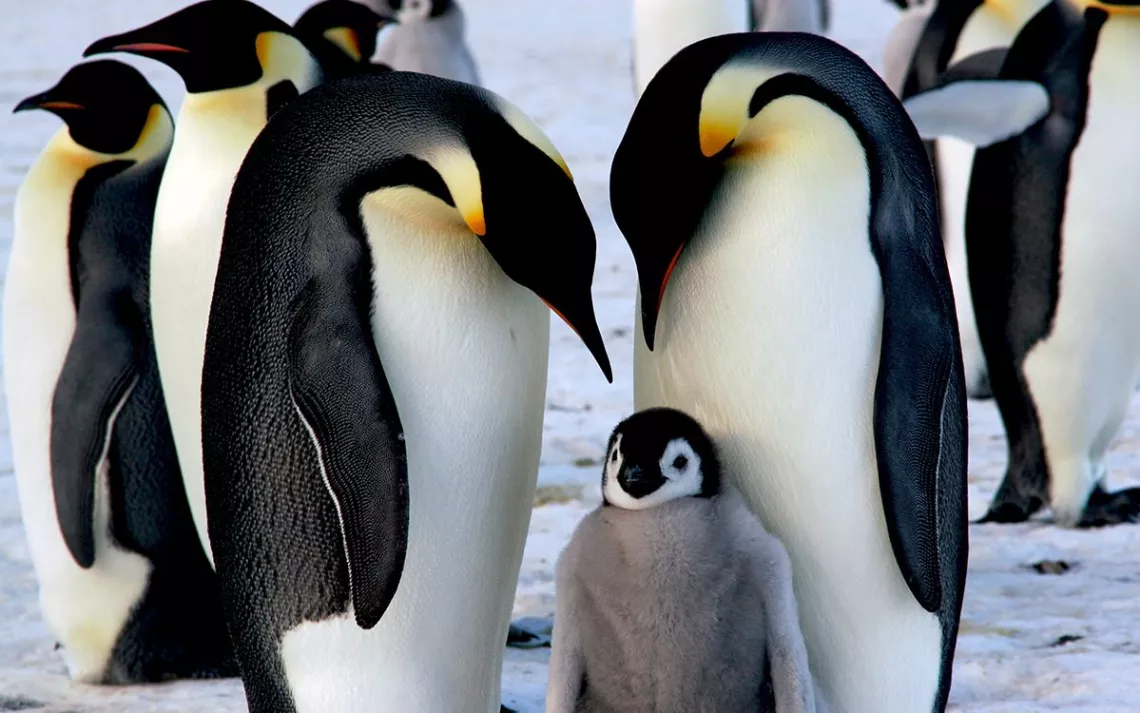Will the Beloved Emperor Penguin Go Extinct?
A new study warns that the birds’ numbers are diminishing

Photo by Bernard Breton/iStock
With their silky white bellies, black feathers, and adorable waddle, emperor penguins are instantly recognizable to many. The flightless Antarctic birds achieved worldwide fame with the 2005 Academy Award–winning documentary March of the Penguins, which chronicled one colony’s struggle to survive the brutal Antarctic winter.
But the bird’s celebrity status hasn’t shielded it from the ravages of climate change.
According to a study published in the journal Global Change Biology this past August, 98 percent of emperor penguin colonies could be gone by the end of the century. That’s because the sea ice on which they depend is melting.
Emperor penguins spend the Antarctic winter on open ice, breeding during the coldest season—females produce just one egg during that time, leaving it behind with their male partners to keep warm while they return to the open ocean to hunt for up to two months.
As of 2020, there were 61 known colonies, with around 270,000 breeding pairs. But with Antarctic sea ice melting and breaking apart earlier than usual, Center for Biological Diversity climate science director Shaye Wolf told Sierra, mass breeding failures have been taking place each year. When the sea ice breaks apart too early, chicks can fall into the water before they know how to swim. In 2016, 10,000 emperor penguin chicks are thought to have drowned because sea ice broke apart too soon.
Wayne and the study’s other researchers found that if sea ice declines at the rate projected in current climate models, almost all colonies could be effectively extinct by 2100.
Julienne Stroeve, the University of Manitoba's senior Canada-150 research chair, analyzed satellite data for the report. Emperor penguins are very vulnerable to extreme events, she said. They can lose quite a few of their numbers in just one unusually hot year. They are also a slow species to recover because they don’t lay that many eggs. “Everything is tied to the sea ice,” she said.
On the same day that the study was published, the US Fish and Wildlife Service announced a proposal to protect emperor penguins under the Endangered Species Act. For Wolf and other environmentalists, this is good news. The Center for Biological Diversity has been petitioning for emperors to be protected under the Endangered Species Act since 2006.
Listing the emperor penguin as endangered would mean more funding for research and conservation. It would also require US agencies to minimize any harms to the penguins. The US is the world’s largest krill importer, Wolf said, so the listing would help ensure those fisheries don’t impact the penguins' food sources. It would also mean the US will have to think more critically about any projects that emit large amounts of greenhouse gases, she added.
Philip Trathan, head of conservation biology at the British Antarctic Survey, was the senior author of the August study. “Emperors are the canary in the coal mine,” he said. “If we don’t have the icon of the Antarctic, what’s left?”
If the US and the rest of the world manage to rapidly reduce greenhouse gas emissions to meet targets set under the Paris Agreement, Wolf believes that there is still hope for the emperor penguin. “They will survive at lower numbers, but they will survive,” she said.
“A world without emperor penguins is a lonelier world. It's a more dangerous world. A world without emperor penguins is not a very livable planet for ourselves.”
 The Magazine of The Sierra Club
The Magazine of The Sierra Club



